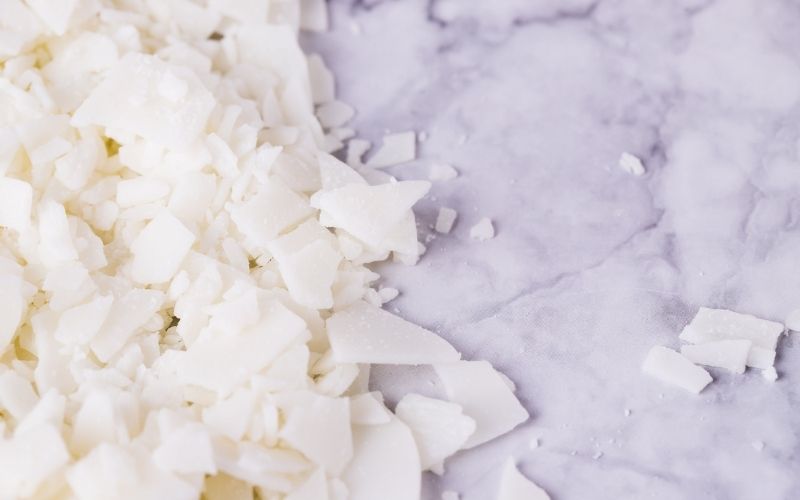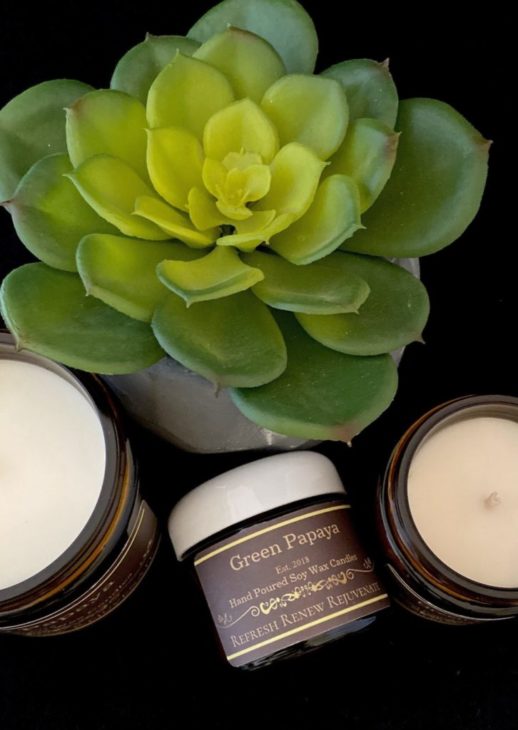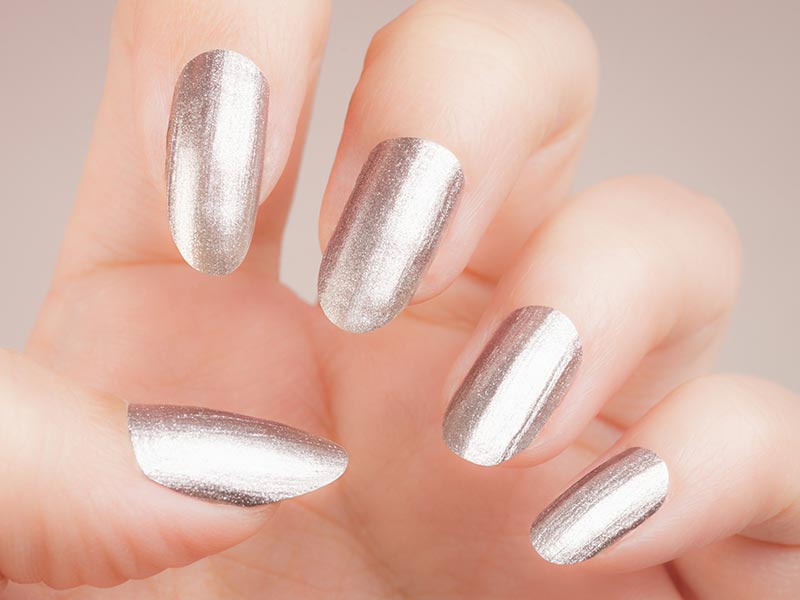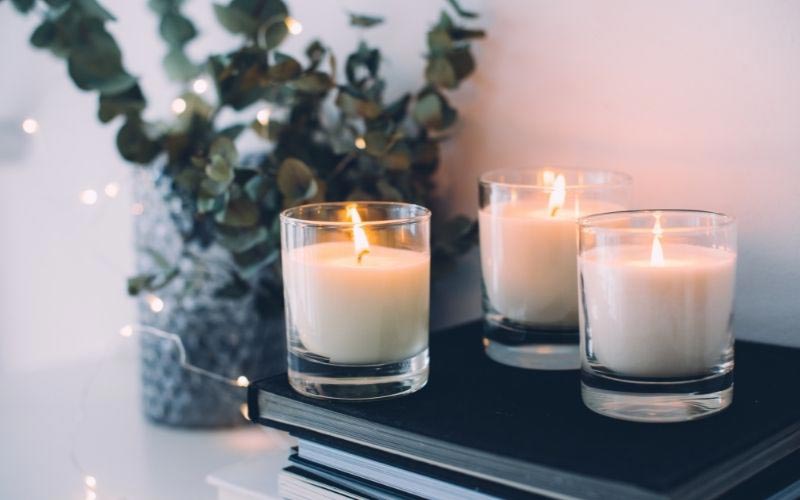Had a rough day or week? Need some “me” time? How about making the room smell good for a special occasion? Need something to go with that wine bottle? How about a candle? Whatever life brings, we need to cope and recoup. Because life happens. Candles come in all sorts of shape, size, color, and scents. They can come in containers or as standalone pillar candles. You can find them almost everywhere, from big box stores to farmer’s markets. However, do you know what ingredients are in your candles? Some manufacturers list out the ingredients used while others do not. No matter your preference, it’s important to know that natural candles are just wax, wick, and oil.
— This article is sponsored by Green Papaya —

Wax
Did you know that there are different types of candle wax? In addition to the common waxes (paraffin, soy, and beeswax) several other types of wax include coconut wax, apricot wax, or a combination of any of the waxes mentioned. Waxes come in either pastille form, flakes, or slabs. Container candles that are in jars (mason, straight-sided, apothecary) use softer types of wax while pillar candles typically require firmer types of wax.
Paraffin wax is one of the most common types of wax used to make candles. It is inexpensive and works well with fragrance oils and colorants, when used. Paraffin wax comes from different sources, one of which is petroleum, the same stuff our gasoline comes from. Paraffin wax typically burn faster and, more often than not, give off soot.
Soy wax is another type of wax, that is becoming increasingly more popular, which comes from extracting oil from soybeans. Soy wax is, therefore, plant-based and burns cleaner and slower than paraffin.
Beeswax comes from the honeycomb of the honeybees and other bees. It is usually a bit more expensive than soy wax and is available in yellow or white variety. Beeswax natural candles come with or without containers and are either aromatic (yellow version) or non-aromatic (white version).

Wick
The role of the wick is to absorb melted wax to keep the candle burning. In order to burn properly, the wicks have to be able to absorb the melted wax at a rate that keeps the flame going. Too big of a wick and the candle melts fast, too small of a wick and tunneling occurs (tunneling is what happens when only the center burns). Wicks come in different types – wood, cotton, and zinc. Wooden wicks and wicks with zinc wires at their core generally stay upright on their own, which makes candle making easier. Cotton wicks need wick holders to stay upright.

Oils
Either fragrance or essential oil can be used to make candles. Essential oils are pure plant extracts, which makes them more expensive to work with, while fragrance oils are synthetically made scents and can be bought cheaper. Fragrance oils are commonly found in many scented products across industries and the amount of oil added to the wax defines how fragrant a candle can be.
Suppliers use “solvents” to turn powdered bulk fragrance oils into liquids. And during this process they often use phthalates. The jury is still out there regarding phthalates, however, they are getting a bad reputation as a potential cause of negative health effects, primarily around breathing.
Wax, wick, and oil. Basic ingredients for natural candles. They help us add a nice touch to our living space, wind down after a long day, or even celebrate milestones and accomplishments in life.
This article is sponsored by Green Papaya. Green Papaya was established in 2018 by a working scientist-mom. She wanted to find a better alternative to store bought candles, wax melts, and tea lights that are too strong-scented and irritating to the nose and airways. She noticed that store-bought, generic candles burned fast, gave off soot, and some of them produced an odd-looking clump after the first burn. Armed with her knowledge of product development and quality management principles, she set out to create a candle line that she would want to use every day with her family and friends.

Kim is the owner and publisher of Sass Magazine, as well as the owner of Sass Studios, a boutique graphic design studio in Frederick, MD. When not in the office, Kim can be found doing some of her favorite hobbies—reading a book, dancing, traveling, or playing with her rescued pitbull.



























Subscribe so you don’t miss a post
Sign up with your email address to receive news and updates!